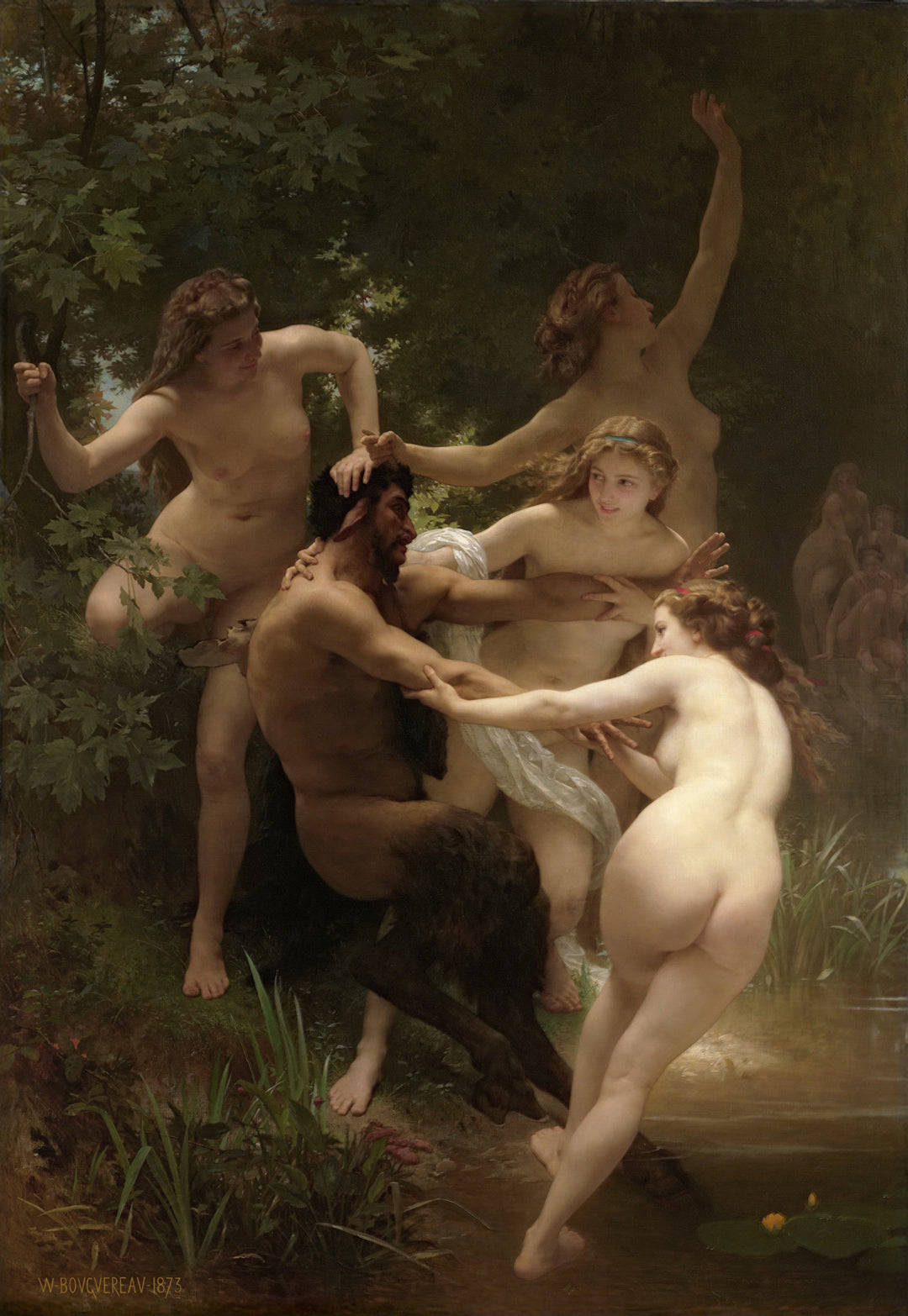
Nymphs and Satyr - Bouguereau
| Author: | Bouguereau |
|---|---|
| Title: | Nymphs and Satyr |
| Original location: | Clark Art Institute, Massachusetts, USA |
| Year: | 1873 |
The painting "Nymphs and Satyr" (1873), by the French academic painter William-Adolphe Bouguereau, is an exquisite manifestation of nineteenth-century academicism, whose refined technique and compositional control make him one of the leading exponents of the official art of the "Third French Republic".
The work depicts four semi-nude nymphs playfully dragging a satyr toward a pond, in a scene steeped in Greco-Roman mythology and restrained sensuality, where every muscle, fold of skin, and bodily expression has been rendered with almost surgical precision thanks to the use of glazes and subtle layers of oil. Bouguereau, trained in the academic tradition of late Neoclassicism, achieves in this painting a balance between bodily idealization and anatomical realism, coming close to formal perfection without sacrificing narrative dynamism. The academicism to which this work belongs is a direct heir of the Neoclassicism of Jacques-Louis David, although it rejects the moralizing severity of the latter in favor of an elegant and controlled sensuality that, paradoxically, anticipates certain visual aspects of Symbolism.
The centrifugal spiral composition guides the viewer’s gaze from the nymphs toward the theatrical resistance of the satyr, establishing a visual tension that is elegantly resolved within the same pictorial plane. The work was executed in oil on canvas with monumental dimensions of 260 × 180 cm, which enhances the theatricality of the scene and its decorative purpose in bourgeois salons or public institutions that exalted the idealized body. Although it was criticized by Impressionists and other modern artists for its academicism, Nymphs and Satyr influenced later artists in their use of the female body as a symbolic device, among them Gustav Klimt and Alma-Tadema, who reinterpreted the female figure through ornamentation and ethereal eroticism. Thus, Bouguereau stands as a bridge between academic tradition and the threshold of modernity, a testament to humanity’s enduring desire for beauty and myth even in the midst of the industrial revolution.